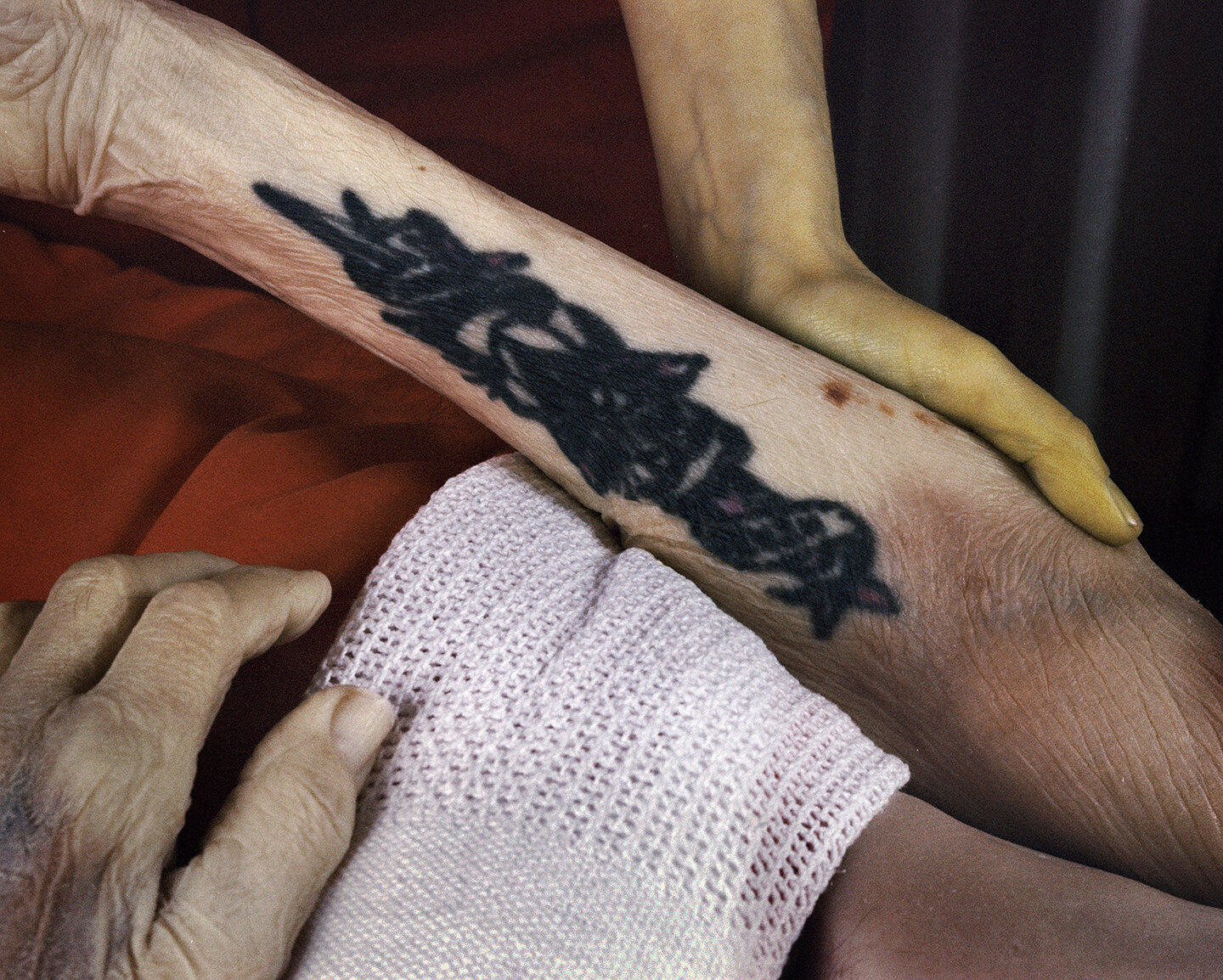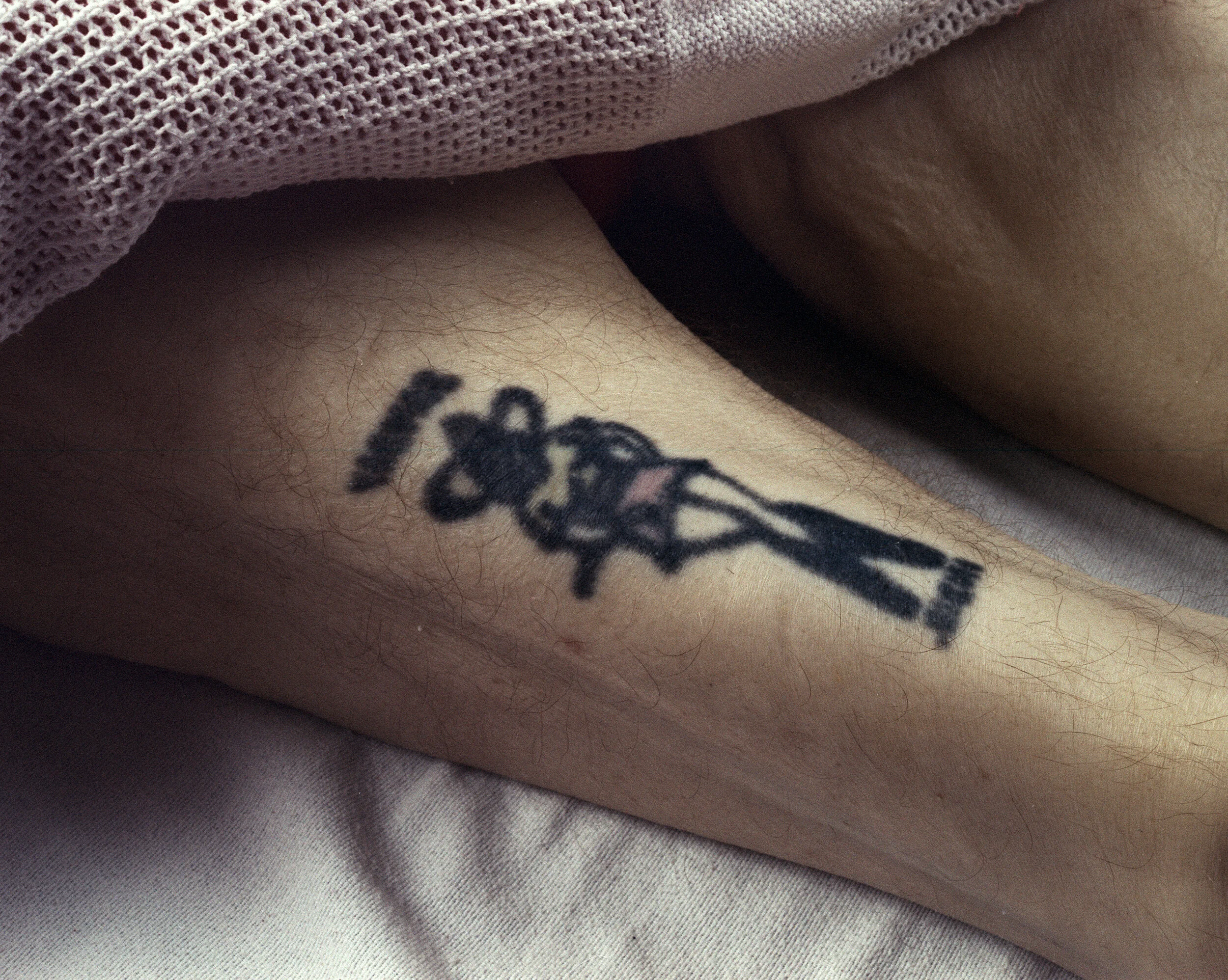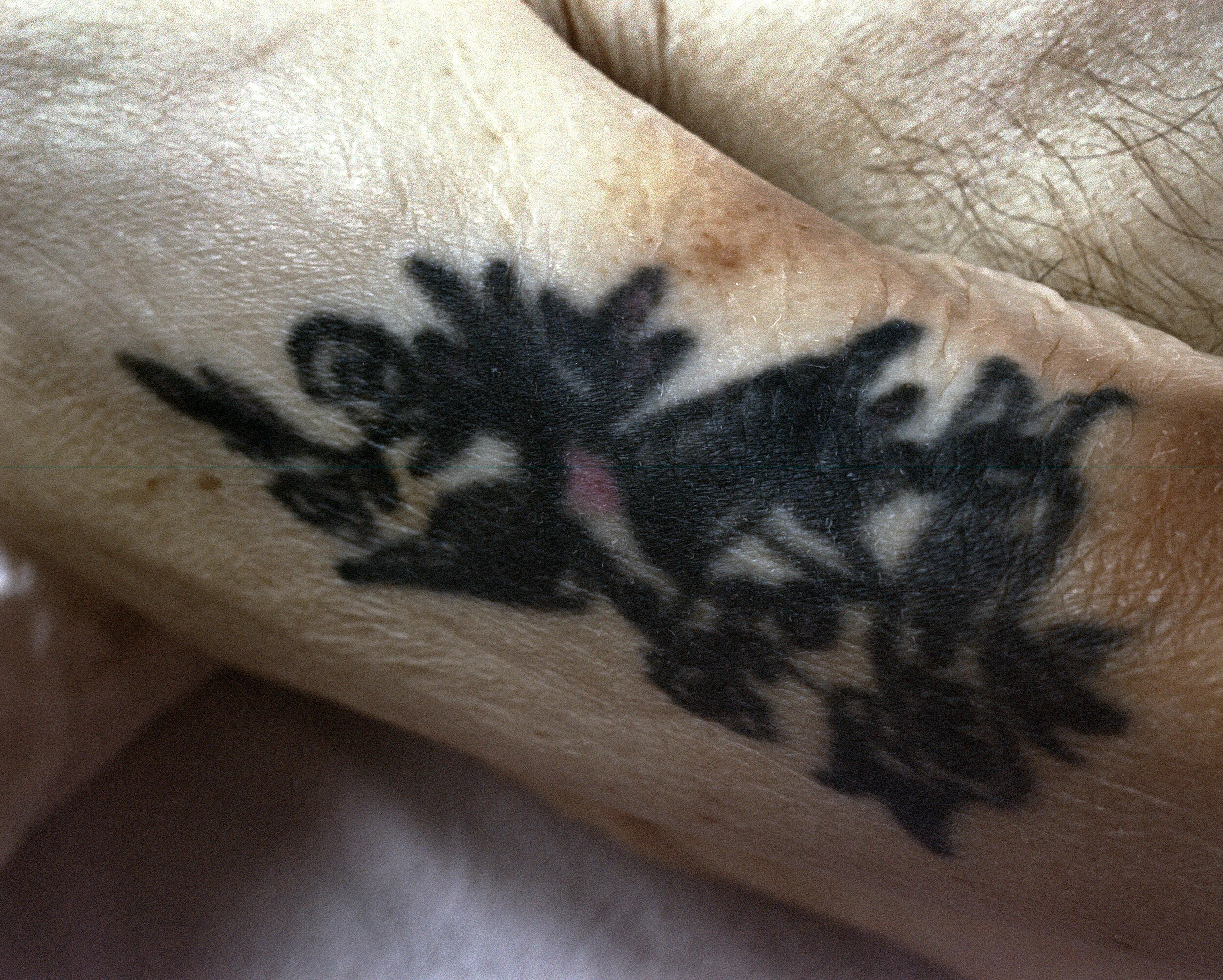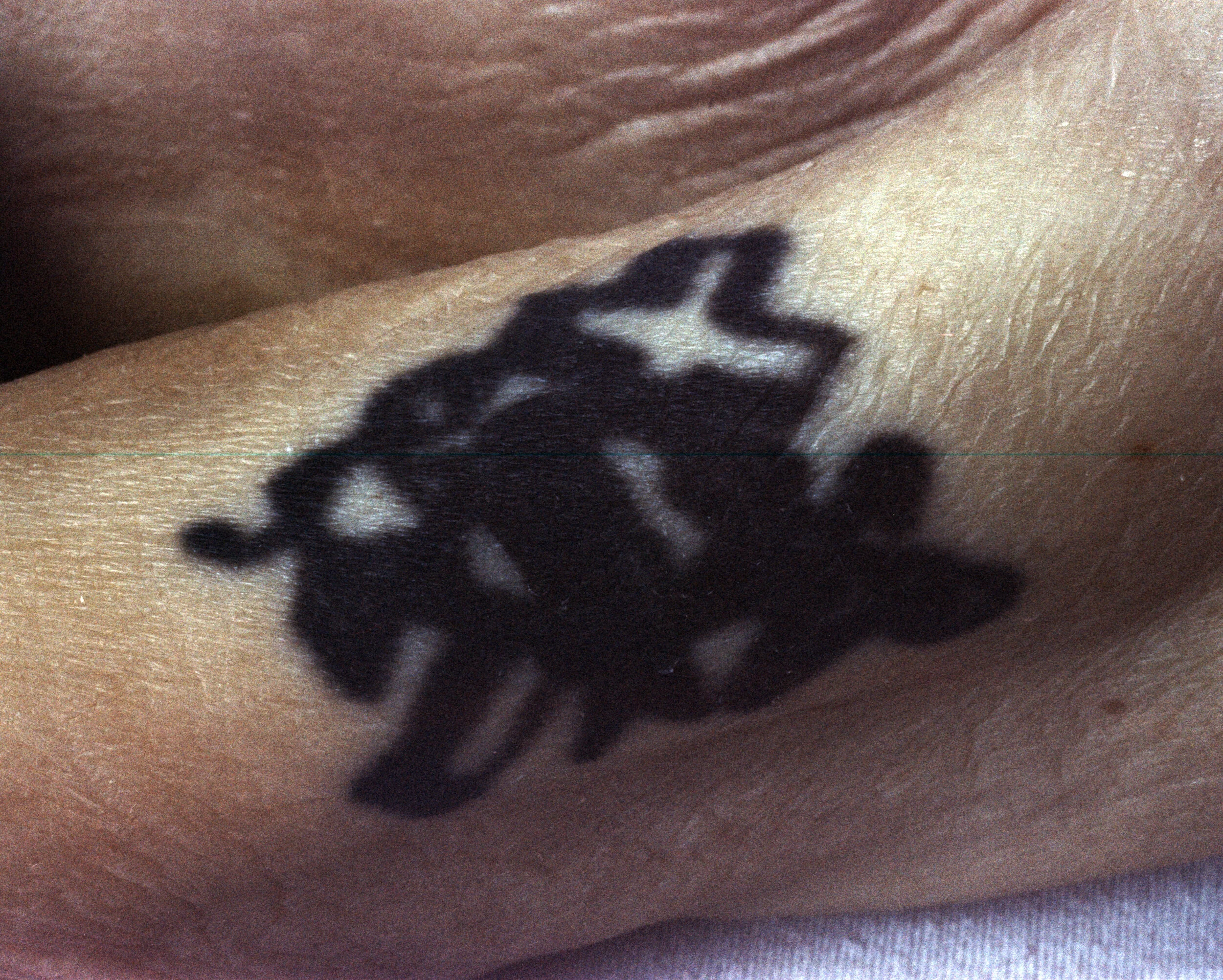Death, Materiality & Memory
In June 2018 I was asked by a friend if I would be willing to photograph her father, who had recently passed away. My friend wanted to memorialize her Dad, to keep hold of these images, these markings on his skin that represented such an important part of his life. More specifically, she wanted to document his tattoos; five pieces he had gotten while serving in the Merchant Navy during the Second World War. I think she approached me for the task because of my degree in scientific and medical photography and assumed I’d done this before. In truth I had never photographed a deceased person.
I think as a culture we’ve lost our connection to death. Post mortem photography no longer is seen as a vital remembrance and such portraits all but stopped in the early 20th century. Post mortem photography was once a normal part of American culture. Prior to photography, portraits had to be commissioned and performed by a painter, a service out of reach to most people. But when the daguerreotype was invented in 1839, suddenly portraiture became affordable and more commonplace. Photography provided the middle class a means for memorializing their loved ones. These images helped in the grieving process, offered comfort and were often the only visual remembrance of the deceased, becoming prized family possessions.
To be asked to perform such a personal and deeply intimate photo session, I was honoured and immediately said yes. We captured the images in two separate sessions, using black and white negative, colour transparency and colour infrared. To my friend: thank you for your trust and allowing me to help you keep your memory of your Dad.




